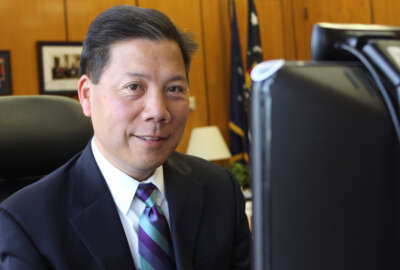
How a White House call sparked a Best Places to Work turnaround for USDA
Leadership is a key driver of employee engagement for agencies like the Agriculture Department, which rose from 16th to ninth in the Best Places to Work rankings in...
When the White House calls and wants to know why your agency is considered one of the worst places to work in government, you better have an answer.
That’s what Agriculture Secretary Tom Vilsack learned back in 2009, when Chris Lu, then the White House Cabinet Secretary, called and questioned USDA’s spot on the annual Best Places to Work list.
“Chris was taking a look at the Best Places to Work list, and it indicated that the Department of Agriculture was at the bottom of the list,” he told the 2016 Best Places to Work winners during the Partnership for Public Service’s Dec. 15 award ceremony. “He said the President was concerned about that, and wanted to know what we were going to do about it.”
Now in 2016, USDA holds the ninth spot out of 18 large agencies. Agriculture rose 3.7 points over the past year, the most of any other large agency.
“That made an impression on me, that the President was interested in the morale and the opportunity to celebrate public service, and that he was keeping an eye on the work of the Partnership in gauging best places to work,” Vilsack said.
The department spent the past seven years trying to “culturally transform” itself. That transformation started among USDA’s top leadership, Vilsack said.
He first attempted to communicate down to every level of the department that he recognized his employees’ hard work.
“I made sure the first Friday of every month that we focused on some of the smaller agencies and the work that’s really important but may not receive as much attention,” he told reporters. “What I saw from administrators, deputy undersecretaries was a concerted effort to get the word out, in appreciation of the work that was being done, and an acknowledgement of the results of our work.”
The Office of Inspector General at the Tennessee Valley Authority also discovered the importance of good leadership. The OIG at TVA earned the number one ranking among 305 subcomponents in 2016. Richard Moore, the TVA inspector general, spent the past year instilling a positive message with his employees.
“Employee engagement churns on whether or not leaders are in denial about the effect that they’re having on their people, and whether they really made it safe — psychologically safe — for people to raise their hand and say, ‘This is the way it looks to me, and I respectfully disagree with you,'” Moore said. “If you can’t do that, you’re always going to be missing the opportunity for employees to tell you about risk that you have in your agency, that you might not know about otherwise.”
The TVA OIG said it’s seen that message spread around the office. It’s not success that can be found in an agency memo, but Moore hears about it from individual conversations with his employees. He’s also seen more of his employees raise their hands during meetings to bring up their concerns or question a decision from leadership.
The Government Accountability Office, which tied with the Peace Corps for the number two spot among midsize agencies, put a lot of time and effort into training programs for its senior executives and leaders on diversity and inclusion, Comptroller General Gene Dodaro told Federal News Radio.
Dodaro believes those training opportunities contributed to GAO’s rise in the ranks this year. The agency was ranked number one in the government for diversity and inclusion.
“Out of the 100 questions we ask on our employee feedback survey, the one question that got the greatest increase this year is [whether] your supervisors work well with people of different backgrounds,” he said. “That jumped about 5 percent and we’re very pleased about that.”
GAO is also focusing in on “people values,” as Dodaro described them.
“I want our people to feel valued, respected and treated fairly every day,” he said. “We’re focusing in on making those people values as strong as our culture [and] our core values for producing our work.”
Employees’ confidence and trust in their leadership governmentwide is still a challenge spot for many agencies. Though the “effective leadership” score rose 1.4 points over the last year in the Partnership’s Best Places to Work report, it remains one of the lower scoring categories.
And maintaining momentum during the upcoming transition year will be a challenge, particularly as agencies lose current senior leaders and new executives take their place, said Sean Morris, federal human capital leader with Deloitte, which worked with the Partnership on the rankings.
“It’s a critical point not to have too much change in those leadership ranks,” Morris said.
But with half of the current Senior Executive Service corps eligible to retire by 2017, it may be difficult to maintain a positive trend in employees’ confidence in their leadership. Typically, there’s a 10 percent spike in federal retirements the year after a transition, Morris said.
Though top leadership at USDA will change during this transition year, Vilsack still has high hopes for his department.
“Top 10’s not good enough,” he said. “Top five is next, and NASA may be out of this world, but we’re coming after you.”
Copyright © 2025 Federal News Network. All rights reserved. This website is not intended for users located within the European Economic Area.
Nicole Ogrysko is a reporter for Federal News Network focusing on the federal workforce and federal pay and benefits.
Follow @nogryskoWFED





